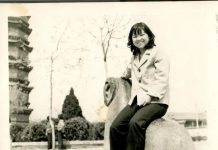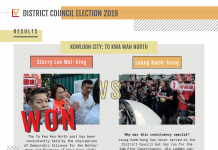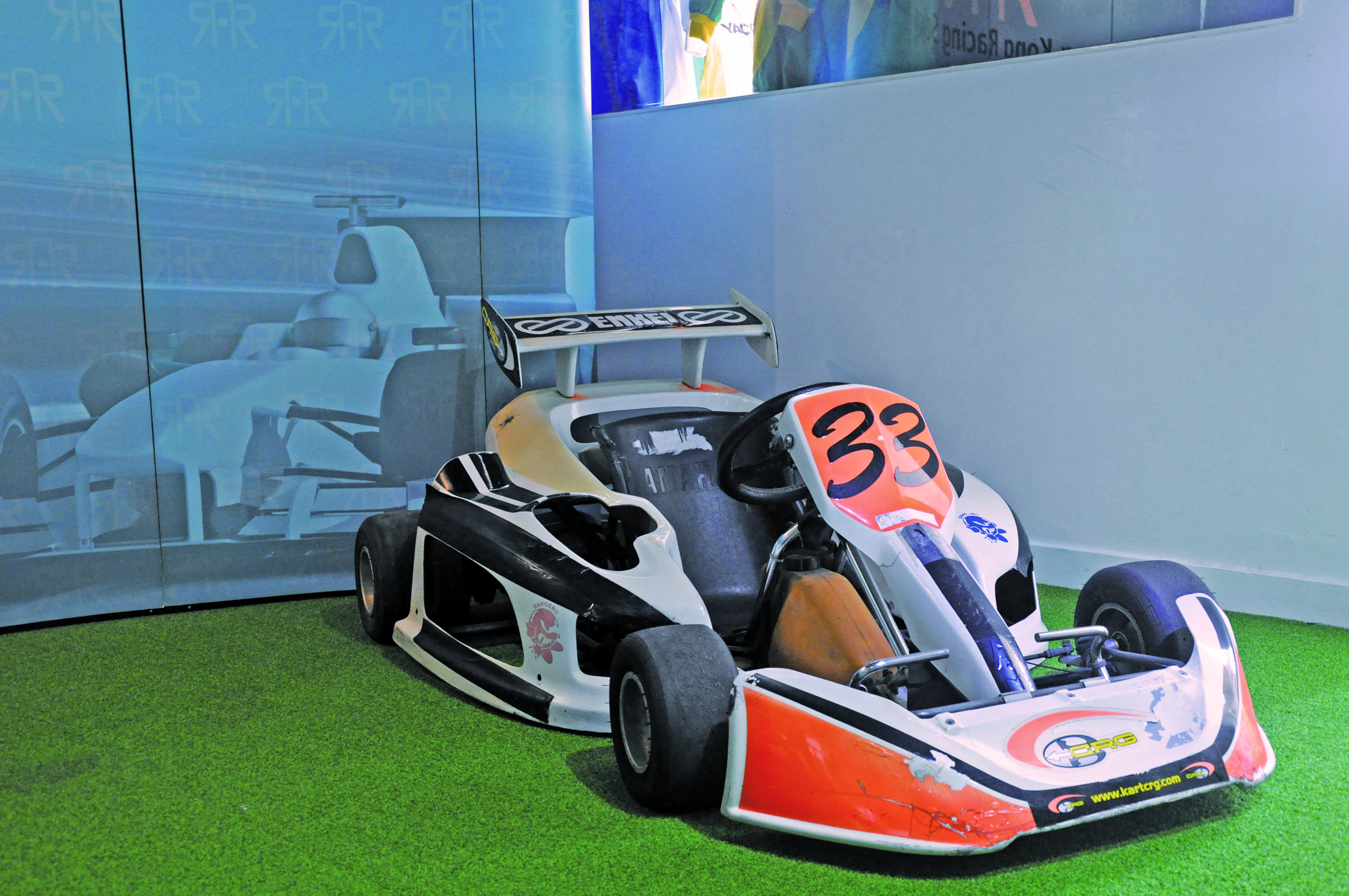Revving up the local car-race scene
by Henry Lee

A corner of a unit in an industrial building in Kwai Chung is home to two sets of racing simulators, equipped with the most up-to-date edition of Gran Turismo 6 on Playstation 4. This is no online games arcade, but Hong Kong’s only motor-racing school, the Hong Kong Racing School for Motorsports.
Many people may regard car racing as physically dangerous, yet the students at this school range in age from eight to 50. Youngsters need to begin with learning how to race karts, which trains them in the foundations of car racing. In fact, many great Formula One drivers such as Lewis Hamilton, Michael Schumacher and Ayrton Senna all began their motorsports careers in karting.
One of the students, 20-year-old Ken Ng Wai-kin, has been learning to race since 2011. Ng, who is aware that his hobby is not particularly popular in Hong Kong, says racing both brings him excitement and helps him to develop perseverance.
Ng describes himself as shy and introverted, but has found himself opening up and more willing to communicate after taking up motor racing. Racing has given him more chances to meet and chat with people. He has also noticed another change. “Even outside car racing, I find myself more aware of safety than before,” says Ng, who hopes to pursue a career in motorsport.
Senna Sin Ho-ming, the founder and the principal of the school, is the “master” of this 1,800-square-foot space. Contrary to expectations, the school does not have a race course. For Ho, this says a lot about the state of motorsport in Hong Kong.

“There is literally no support for racing activity in Hong Kong. We have no racing course. Most of the time, Hong Kong car racers hold their competitions in the Mainland. So basically Hong Kong has no facilities that can help Hong Kong’s racers and racing activity,” he says.
Hong Kong’s only private racing course, the Diamond Coast International Kart Circuit in Tuen Mun, was closed down after a British teenager was killed in a freak accident in 2010. The incident further deepened the perception that motorsports and racing are dangerous.
Senna Sin hopes to change that perception and promote motorsports with his school which opened its doors in 2011. Sin says car racing is stereotyped as a dangerous activity, indulged in by punks or rich playboys, which is not the reality. He makes frequent visits to primary and secondary schools to share his experiences as a car racer and to promote this declining sport.
Sin explains that car racing is safer than people think because safety precautions are built into the sport. It is also far safer than illegal street racing, which Sin is keen to differentiate from “legitimate” car racing. Taking karting as an example, he says the kart is modified to resist the force of a great impact.

The equipment used by racers is verified by the Fédération Internationale de l’Automobile (FIA). The racing suit and crash helmet are highly heat-proofed and have expiry dates. Despite the accident in Tuen Mun, Sin says car racing is safe when participants use proper equipment and follow procedures.
Sin further points out that while drivers on a racecourse drive in one direction, those in street races drive on roads with two-way traffic. Race courses also have buffer zones equipped with sand or tyre walls to lower the force of impact if there is a crash and there are professional yardmen and marshals on standby during a competition to help the drivers if an accident happens.
Sin says that learning car racing can even enhance drivers’ everyday awareness of motoring safety. For instance, his school offers classes on “drifting”, a technique where drivers deliberately over-steer and the vehicle appears to slide sideways.
“We hope to teach people in case of rain or a slippery road, and your car is going to be out of control, you know how to deal with it,” he says.
While Sin seems to be facing an uphill struggle to promote motorsports in Hong Kong today, Raymond Tsang Chau-ming remembers a different, more vibrant motorsports scene. Although he is now an actor, Tsang has supported motorsports in Hong Kong ever since his days as a car racer in the 1970s.
Tsang says that back in the 1970s and ’80s, Hong Kong had a thriving motorsports scene. He himself participated in many local and international car racing competitions including the famous Hong Kong-Beijing Rally in 1986. He drove directly from Hong Kong to Tiananmen Square.

The city also hosted an annual world-renowned kart competition in Victoria Park. The Victoria Park International Kart Prix began in 1967 and was the karting competition with the most prize money in the world. Many foreign visitors came to Hong Kong to watch the competition.
The track was built on the four football courts in Victoria Park, while the two basketball courts were used as the pit for the race. Some former Formula One Champions such as Michael Schumacher and Ayrton Senna were among those who competed in Victoria Park at the start of their racing careers.
Tsang describes the event as a carnival. People from different countries did not just watch the competition but also used it as an opportunity to trade car-parts and exchange views on cars. “The atmosphere in Victoria Park during that week was so joyful,” Tsang recalls.
However, due to complaints received from residents and the public’s increasing concerns about pollution, the karting prix ended in 1993 after 27 years. Tsang laments its passing. “It is just a week in a year. But the Victoria Park International Kart Prix was an international mega event. It was really cool,” he says.
Prominent businessman Lawrence Yu Kam-kee, the president of the Hong Kong Automobile Association (HKAA), is the “godfather” of motorsports in Hong Kong. He attributes the glories of the past to the support from the British colonial government.
Back in the 1980s, apart from following international standard racing competitions, car buffs would also organise various driving activities locally. They held a karting competition in the Shek Kong Airfield with the permission of the British army. Enthusiasts also utilised the barracks and the runway to hold driving activities such as slalom races and quarter-mile sprints.
Perhaps the most exciting race was the Hong Kong Rally competition when the Waterworks Office (now the Water Supplies Department) of the colonial government opened the catchwaters to provide a rugged racetrack.
“I feel sorrow [about the current situation], because Hong Kong was actually the forerunner of motorsports in the Asia,” says Yu, remembering the good old days.
Now Macau plays host to a mature and world-renowned Grand Prix every year with huge support from its government. Yu says that, at the beginning, the competition was entirely organised by HKAA. All the helpers and staff were from Hong Kong. “We were very proud to have organised such an event in Macau but, at the same time, feel it’s very much a pity that we don’t have our own event in Hong Kong,” says Yu.
Although Yu says the current condition of Hong Kong car racing is stagnant, he believes it is not terminal. “In my opinion, if we want to develop a sport successfully, it must start from the grassroots,” he says.
Yu, a former chairman of the Hong Kong Football Association, uses football development as an analogy. He says people need not play in the World Cup in order to enjoy football. Those who play on local cement pitches also enjoy the game. Likewise, what local car buffs want is just a place where people with a car licence and an ordinary car can enjoy various entertaining driving activities.
The popularity and prominence of motorsports in Hong Kong has certainly undergone a sea change in the last 30 years. But local people may soon have the chance to become reacquainted with car racing after all.
Although Hong Kong failed in its bid to host the 2014/5 Formula E Championship, Lawrence Yu is making a bid for the 2015/6 Championship. In Formula E, the race cars are all electronically-powered.
There is no pollution problem and the cost of holding the competition is much lower than for Formula One. Yu says it would be really worthwhile to hold such an event in Hong Kong. What is more, citizens will be able to enjoy the sport up close as it would be held in the urban area.
On top of that, Yu says the government has agreed to reserve land for driving activities. He stresses that car racing does not need a large space. Even with limited space, many activities can be held. Drivers could drive around in a chase race or compete in accelerating from 0 to quarter of a mile in the shortest time. Besides, just drifting or driving around obstacles would be interesting enough.
Yu says he has already “filled up his calendar” with possible activities that could be organised for such a potential new space. He is already thinking about activities involving electronic karts, advanced driving lessons, professional racers’ training, and even second-hand car festivals.
Car racing in Hong Kong may appear to be in the doldrums now, but Yu is optimistic about reclaiming past glories. “We have the history, we have the tradition, we have the heritage,” he says.
Edited by Yoyo Chan











































